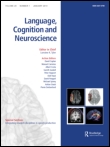Abstract
Functional neuroimaging and Parallel Distributed Processing (PDP) theory, both introduced to cognitive science in the 1980s, led to influential research programmes that have proceeded in parallel with little mutual influence. The PDP approach advanced specific claims about the nature of neural representations that, perhaps surprisingly, have gone largely untested in functional brain imaging. One reason may be the widespread use of univariate statistical methods for analysing brain imaging data, which typically rely on assumptions that render them unable to detect distributed representations of the kind that PDP predicts. More recent multivariate methods for image analysis may be better suited to detecting such representations. In the current article, we consider why univariate methods have been insufficient to test PDP’s representational claims, articulate some of the properties that neural representations ought to have if the PDP view is valid and then survey the recent neuroimaging literature for evidence that neural representations do or do not have these properties. The survey establishes that the PDP view of distributed representations has considerable evidential support. This analysis underscores the importance of understanding how the assumptions underlying methods for analysing functional imaging data constrain the kinds of questions that can be addressed. We then consider the implications for our developing understanding of the neural bases of cognition and for the design of future brain imaging studies.
Cox, C. R., Seidenberg, M. S., & Rogers, T. T. (2015). Connecting functional brain imaging and Parallel Distributed Processing. Language, Cognition and Neuroscience, 30(4), 380-394.
